The History of The “12th Man” at Texas A&M: A Comprehensive Overview
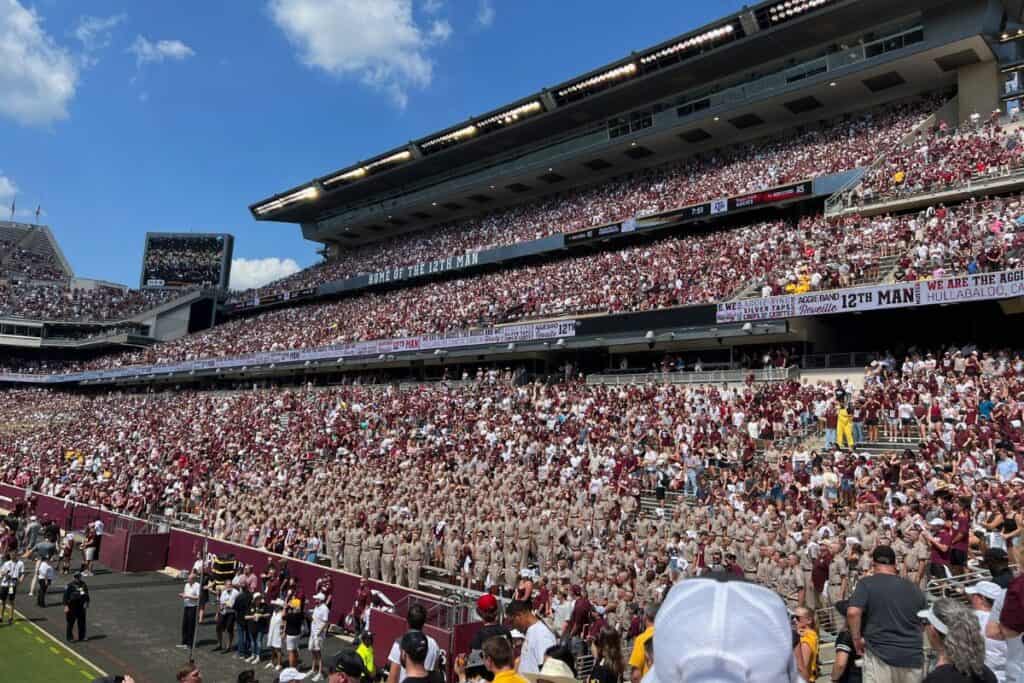
If you’re a fan of college football, you’ve probably heard of the Texas A&M Aggies and their iconic “12th Man” tradition. But do you know the history behind this beloved tradition? The story of the 12th Man dates back to a fateful game in 1922, when the Aggies faced off against the heavily favored Centre College Praying Colonels in the Dixie Classic in Dallas.
During the game, the Aggies suffered a number of injuries, leaving them with a depleted roster. In a moment of inspiration, coach Dana X. Bible called upon E. King Gill, a former football player who was in the stands watching the game, to suit up and stand ready to play if needed.
Gill donned a uniform and stood on the sidelines for the remainder of the game, ready to step in if called upon. Though he never entered the game, his willingness to serve his team in a time of need inspired the Aggies to a stunning upset victory over Centre College.
From that day forward, the 12th Man became a symbol of the Aggies’ fighting spirit and dedication to their team. Today, the tradition lives on as thousands of Aggie fans stand throughout each game, ready to support their team in any way they can.
Whether you’re a die-hard Aggie fan or just a casual observer of college football, the story of the 12th Man is a testament to the power of teamwork and the enduring spirit of sportsmanship.
Origins of the 12th Man Tradition
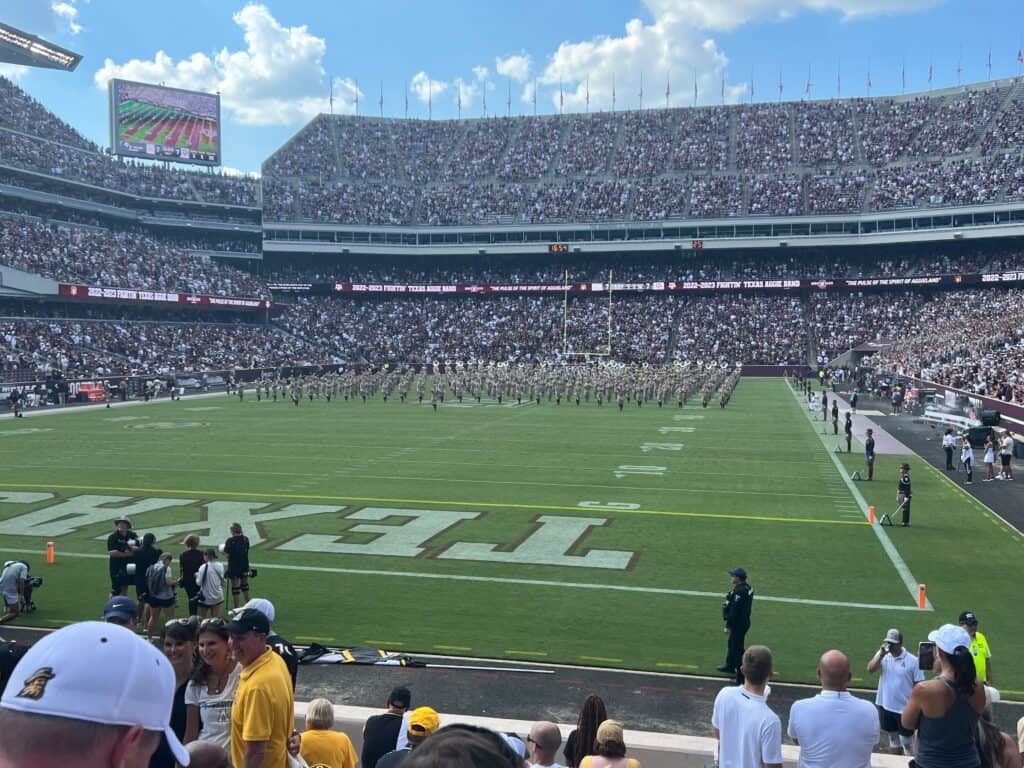
If you’re a Texas A&M fan, you know that the 12th Man tradition is a big deal. But where did it come from? The story begins in 1922, during the Dixie Classic in Dallas.
Texas A&M was playing against the heavily favored Centre College Praying Colonels. Injuries had left the Aggies with only 11 players, and they were struggling to keep up with Centre.
That’s when E. King Gill, a basketball player and former Texas A&M football team member, stepped in. Gill had been sitting in the press box, helping reporters identify players on the field below.
But when he heard that the Aggies were short-handed, he rushed down to the sideline and suited up in a uniform that an injured player had left behind.
Gill never actually entered the game, but his willingness to do so inspired the team and the fans. From that day forward, the 12th Man tradition was born. The idea is that every Texas A&M student is a potential 12th Man, ready to step in and help the team if needed.
The tradition has become a central part of Texas A&M culture.
Every game, the student section stands throughout the entire game, symbolizing their readiness to step in if necessary. The phrase “Home of the 12th Man” is emblazoned on the stadium and is a source of pride for Aggies everywhere.
The 12th Man tradition has also spread beyond Texas A&M. Other colleges and professional sports teams have adopted the idea of the 12th Man, recognizing the importance of fan support.
But for Texas A&M, the 12th Man tradition is more than just a slogan. It’s a way of life, a symbol of the school’s deep connection to its football team and its community.
As legendary Texas A&M football coach Dana X. Bible once said, “The 12th Man is the greatest tradition in college football.” And it all started with E. King Gill and a willingness to step up and help when needed.
The 12th Man in Action
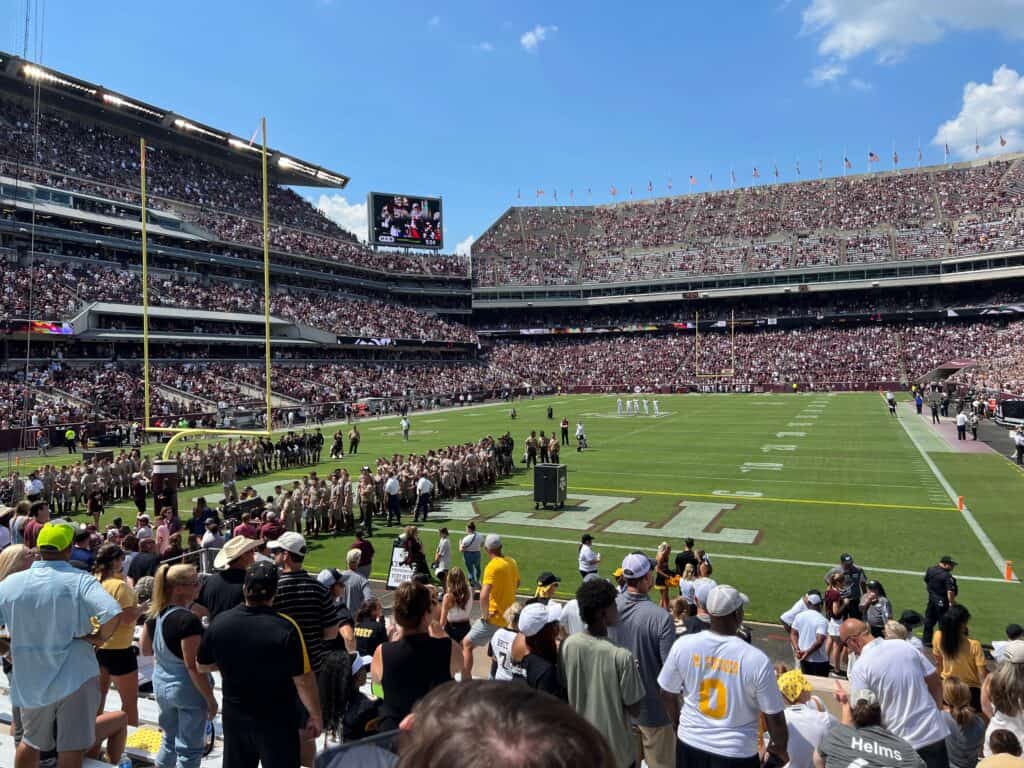
When you attend a Texas A&M football game at Kyle Field, you’ll see the 12th Man in action. The 12th Man is the term used to describe the Aggie fans who stand throughout the game to show their support for the team.
It’s a tradition that dates back to 1922, when a walk-on player named E. King Gill was called upon to suit up and stand on the sidelines in case his team needed him.
Today, the 12th Man is a symbol of unity and service, and it’s one of the most recognizable traditions in all of college sports.
The 12th Man is more than just a group of fans. It’s a way of life for Aggies. The loyalty and camaraderie that comes with being a part of the 12th Man is something that can’t be replicated. It’s a bond that lasts a lifetime, and it’s one of the reasons why Texas A&M has such a strong alumni network.
The 12th Man is also a symbol of the underdog Aggie team. In 1922, Texas A&M was a heavy underdog against the top-ranked Centre College Praying Colonels. But the Aggies pulled off one of the greatest upsets in college football history, winning 22-14.
That willingness to serve is still a tradition at Texas A&M today, and it’s something that’s celebrated at every football game.
The 12th Man is more than just a symbol of loyalty and service. It’s also a way for Aggies to give back to their community.
The 12th Man Foundation provides scholarships and programs to help students succeed, and the Traditions Council works to preserve and promote Aggie history and traditions.
The 12th Man is a trademark of Texas A&M University, and it’s something that’s celebrated throughout the year. From the annual Muster ceremony to the 12th Man towels that are waved in the stands, the 12th Man is a part of every Aggie’s life.
In recent years, the 12th Man has become even more visible thanks to social media. Aggie fans worldwide can connect and share their love for Texas A&M, and the 12th Man is a big part of that. Whether you’re in College Station or halfway around the world, you’re never far from the 12th Man.
The 12th Man is a tradition passed down from generation to generation, and it will continue to be a part of Aggie culture for years to come.
So the next time you’re at a Texas A&M football game, take a moment to appreciate the 12th Man in action. It’s a sight to behold, and it’s something that you’ll never forget.
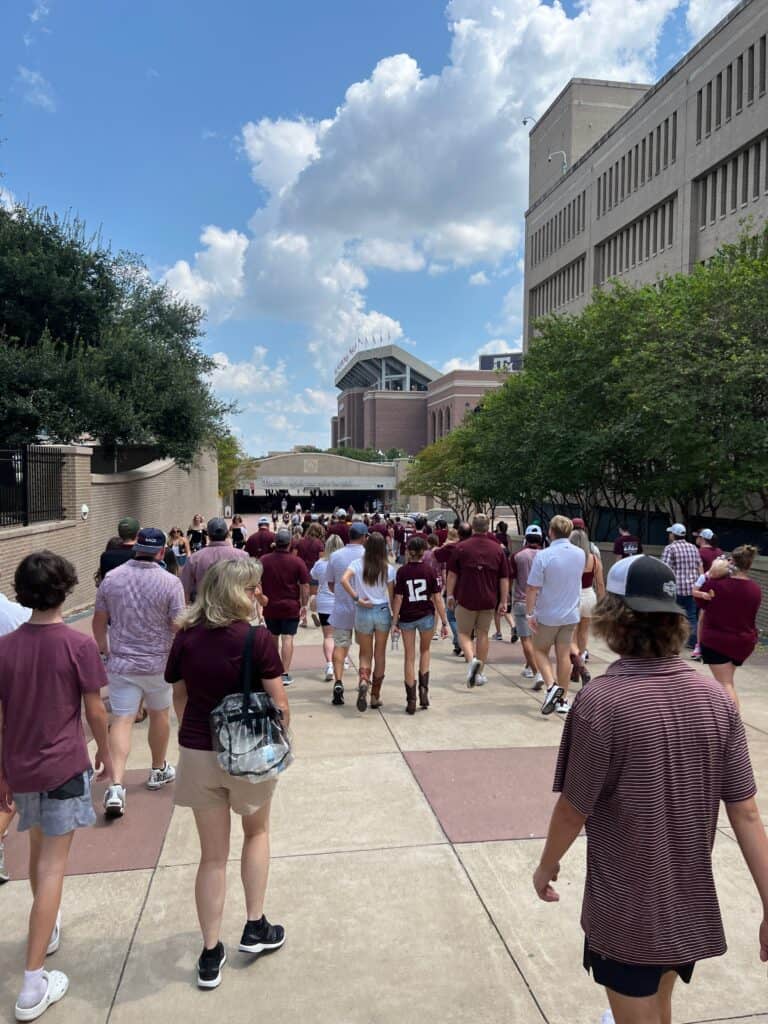
The 12th Man Beyond Texas A&M
You may think that the 12th Man is just a tradition for Texas A&M, but it has transcended beyond the university and become a symbol of sportsmanship, dedication, and perseverance.
In the world of professional sports, the 12th Man has become a term used to describe team fans who provide unwavering support and enthusiasm during games.
Many teams have adopted this term across various sports leagues, including the Seattle Seahawks of the National Football League (NFL).
The Seahawks’ fans, known as the “12s,” have become famous for their loud and passionate support, which has helped the team achieve great success on the field.
The 12th Man has also been associated with championship teams. In 2006, the Miami Heat of the National Basketball Association (NBA) won the championship with the help of their “White Hot Heat” campaign, which included the slogan “15 Strong” to represent the 15 players on the team.
The Heat also recognized their fans as the 12th Man, acknowledging their support as a crucial factor in their victory.
During World War II, the 12th Man took on a new meaning. In 1942, the Green Bay Packers of the NFL lost many of their players to military service, leaving them with a shortage of players.
To help fill the roster, the team held open tryouts and signed a local college student named Don Hutson. Hutson went on to become one of the greatest players in NFL history, and the Packers credited their fans as the 12th Man for helping them overcome their challenges during the war.
The 12th Man has even become a trademarked term. In 1990, Texas A&M filed for a trademark on the term “12th Man” to protect their use of the term in their football program. The NCAA recognized the trademark in 1998, and Texas A&M has since licensed the term to other sports teams and organizations.
In summary, the 12th Man has a rich history beyond Texas A&M. It has become a symbol of fan support, championship success, wartime perseverance, and even a trademarked term. So the next time you hear the term 12th Man, remember that it represents more than just a tradition at Texas A&M.
Controversies and Legal Issues
As with any long-standing tradition, the “12th Man” at Texas A&M has seen its fair share of controversies and legal issues over the years. Here are some of the most notable incidents:
Trademark Infringement Issues
The “12th Man” is a registered trademark of Texas A&M University, and the school has been known to fiercely protect its intellectual property.
In 2016, the university filed a lawsuit against the Indianapolis Colts for using the phrase “12th Man” in marketing materials, claiming that it infringed on the school’s trademark. The case was settled out of court, with the Colts agreeing to stop using the phrase.
NCAA Violations
In 2012, Texas A&M was hit with NCAA sanctions after it was discovered that several football players had accepted improper benefits from boosters.
As part of the punishment, the school was forced to forfeit several wins from the 2010 season, including a victory over Oklahoma in which the “12th Man” played a key role.
While the NCAA did not specifically cite the “12th Man” in its ruling, the incident was a black mark on the tradition’s otherwise storied history.
Plagiarism Allegations
In 2016, author Michael J. Bynum sued Texas A&M over allegations that the school had plagiarized his work in a story about the “12th Man.”
Bynum claimed that he had commissioned a writer to produce the piece, which the school then published without his permission. The case was eventually settled out of court, with Texas A&M agreeing to pay Bynum a sum of money and issue a public apology.
Overall, the controversies and legal issues surrounding the “12th Man” at Texas A&M serve as a reminder that even the most beloved traditions can be subject to scrutiny and criticism.
Despite these challenges, the “12th Man” remains an integral part of Aggie history and culture, and will likely continue for many years.

The 12th Man Today
As an Aggie, you know that the 12th Man is more than just a tradition. It’s a symbol of unity, service, and unwavering support for Texas A&M athletics. Today, the 12th Man is stronger than ever, and it continues to inspire Aggies everywhere.
One of the most visible ways that the 12th Man is celebrated is at Kyle Field, where Aggies come together to cheer on their teams.
The stadium, which has a seating capacity of over 102,000, is one of the country’s largest and always packed with passionate fans.
Even during the COVID-19 pandemic, when attendance was limited, Aggies found ways to show their support, whether it was through virtual watch parties or socially distanced tailgating.
But the 12th Man isn’t just about what happens on game day. It’s a way of life for Aggies, and it’s reflected in everything they do. From community service projects to social media campaigns, Aggies are always finding new ways to come together and support each other.
One example is the SEC’s “Unity” initiative, which encourages student-athletes to unite and promote unity, equality, and respect. Aggie athletes have been at the forefront of this movement, using their platform to speak out against racism and injustice.
Another way that the 12th Man is celebrated is through service. Aggies are known for their commitment to giving back, and the 12th Man is no exception. Whether it’s volunteering at a local food bank or participating in a service project on campus, Aggies are always looking for ways to make a difference.
Finally, the 12th Man is also celebrated on social media, where Aggies come together to share their love for their school and their teams. From hashtags like #GigEm and #BTHO (Beat The Hell Outta) to viral videos and memes, Aggies are always finding new ways to show their support and connect with each other.
The 12th Man is alive and well at Texas A&M. It’s a symbol of unity, service, and unwavering support for Aggie athletics and continues inspiring Aggies everywhere.
Whether you’re cheering on your team at Kyle Field, volunteering in your community, or connecting with other Aggies on social media, you’re part of the 12th Man and helping keep the tradition alive.

Conclusion
As you can see, the history of the 12th Man at Texas A&M is a rich and storied one. From its humble beginnings in 1922, the tradition has grown to become a symbol of the Aggie spirit and a source of pride for the entire university community.
Over the years, the 12th Man has come to represent much more than just a group of willing football players. It stands for the spirit of service and selflessness that is at the heart of the Aggie ethos. It is a reminder that, no matter what challenges we face, we can always count on each other to stand ready and do our part.
As we celebrate the centennial of this beloved tradition, it is important to remember that the 12th Man is not just a symbol or a mascot. It is a living, breathing embodiment of the Aggie spirit that continues to inspire and unite us to this day.
So whether you are a lifelong Aggie or a newcomer to the university, take pride in being a part of this great tradition. Embrace the spirit of the 12th Man, and remember, no matter what challenges lie ahead, you are never alone.
My Experience With The 12th Man and Texas A&M

I love college football with a passion. I’ve always heard the stories of the 12th Man and the marching band at Texas A&M. My first and only trip to Kyle Field was one for the record books, and the 12th Man did not disappoint.
It’s true what everybody says — The people in College Station are generous, hospitable, and just downright nice.
Kern Campbell, GameDay Culture
It may partially be that we were not an SEC foe, but the fans and locals in College Station could not have been nicer.
Sure, it was a blazing hot September day in Texas, but it was a special day for me as I got to watch my alma mater, Appalachian State, play against then #6 Ranked Texas A&M, along with my father and two daughters. It’s a memory I will never forget, and it’s just one more reason why college football is so great!
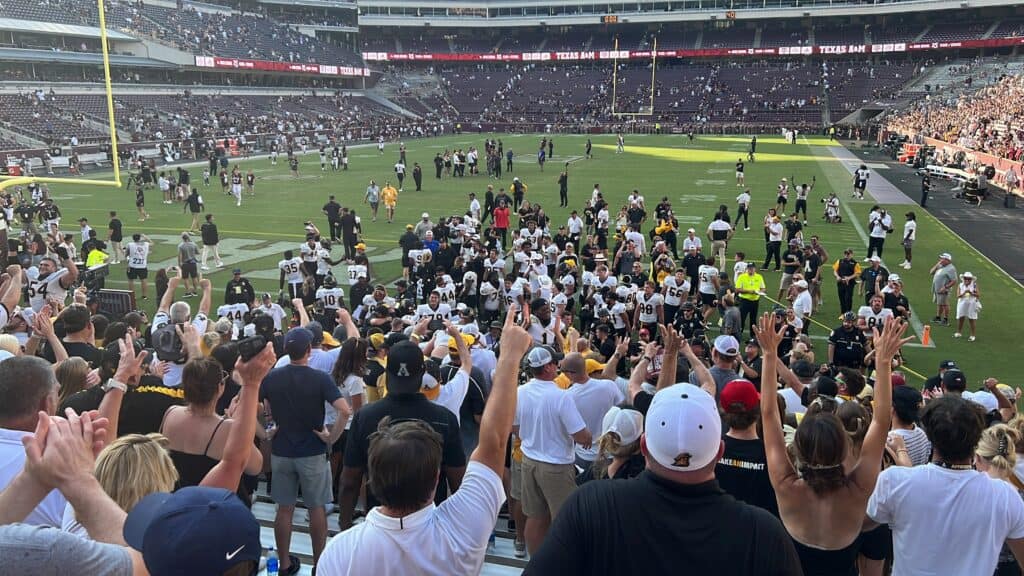
Other Traditions Around The Sports World Worth Reading About
Frequently Asked Questions
What is the story behind the 12th Man Aggie?
The story behind the 12th Man Aggie dates back to January 2, 1922, when the Texas A&M football team was facing the heavily favored Centre College Praying Colonels in the Dixie Classic. During the game, an Aggie by the name of E. King Gill, who was a squad player for Texas A&M’s football team, was up in the press box helping reporters identify players on the field below. When the Aggies’ coach saw that his team was running low on players due to injuries, he called out for Gill to suit up and be ready to play if needed. Gill then went down to the sideline, put on a uniform, and stood ready to play for the rest of the game. Although he never entered the game, his willingness to serve his team has become the stuff of legend.
Is the 12th Man a true story at A&M?
Yes, the 12th Man is a true story at Texas A&M. The story of E. King Gill and the Aggies’ 1922 game against Centre College has been passed down through the generations of Aggies and has become an integral part of the school’s culture and identity.
Who was the original 12th Man at Texas A&M?
E. King Gill was the original 12th Man at Texas A&M. His willingness to serve his team and stand ready to play in the 1922 Dixie Classic has become the inspiration for generations of Aggies who have followed in his footsteps.
Who came up with the 12th Man?
While E. King Gill’s willingness to serve his team and stand ready to play in the 1922 Dixie Classic inspired the 12th Man tradition, it was Texas A&M student newspaper reporter Gene Stallings who first coined the term “12th Man” in a 1922 article about the game.
What is the meaning of the 12th Man at Texas A&M?
The 12th Man at Texas A&M represents the spirit of selfless service and willingness to stand ready to help others. It is a symbol of the school’s culture of teamwork, dedication, and loyalty to one another.
How does a student become part of the 12th Man kickoff team at Texas A&M?
To become part of the 12th Man kickoff team at Texas A&M, students must try out for the team during the spring semester. The tryout process includes a series of physical tests and evaluations, as well as interviews with current members of the team. Those who are selected to join the team must be enrolled as full-time students at Texas A&M and must maintain a minimum GPA to remain on the team.
